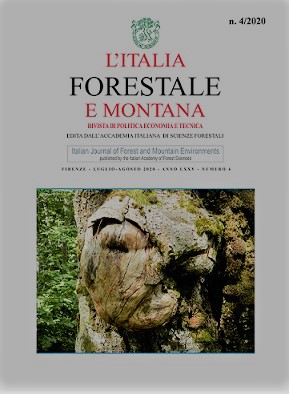The new plan and the application manual for the preparation of PAIB of the National Parks
Published 2020-09-21
Keywords
- FFF planning,
- parks
Copyright (c) 2020 Italian Journal of Forest and Mountain Environments

This work is licensed under a Creative Commons Attribution-NonCommercial 4.0 International License.
Abstract
The following paper will introduce the general criteria on the Forest Fire Fighting (FFF) planning, with a focus on:
1) Historical facts; properties of the first planning; from fire control to fire management; from emergency model to risk reduction; revaluation of the traditional use of fire; from war on fire to cohabitation coexistence with fire; FST Fire Smart (Tedim et al.,. 2015);
2) FFF planning rules before the recent review. This analysis will show the reasons of the new planning setting for national parks, underlining the following requirements:
- updating the manual and the technical standards, due to a new experience acquired;
- plans standardization to allow plans comparison.
The paper describes the review criteria and the new setting requirements either to show the job done by the planners, either to avoid the introduction of new planning method, which has not been sufficiently tested or is too difficult to apply. The starting point of this analysis will be the Forest Fire Fighting plan of each National Park. The results will show the most significant features and an overall opinion on the planning examined will follow.
The plans schedule will describe which of plans is under review, previous examined and expired. A great focus will be on each different situation subjected to fire, from physiological problems to seriously pathological one.
The main step of this paper will be the description of the advantages deriving from the risk analysis, the concept of critical fire, the objective selected with RASMAP, a reference of the environmental description of the territories (already debated in other planning papers).
The setting of the new plans will be done showing:
- the analysis of the Park fires;
- the forecast and identification of the highest risk areas, with the help of cartography;
- the objectives definition (RASMAP);
- the planned interventions to achieve the RASMAP (the logical framework).

